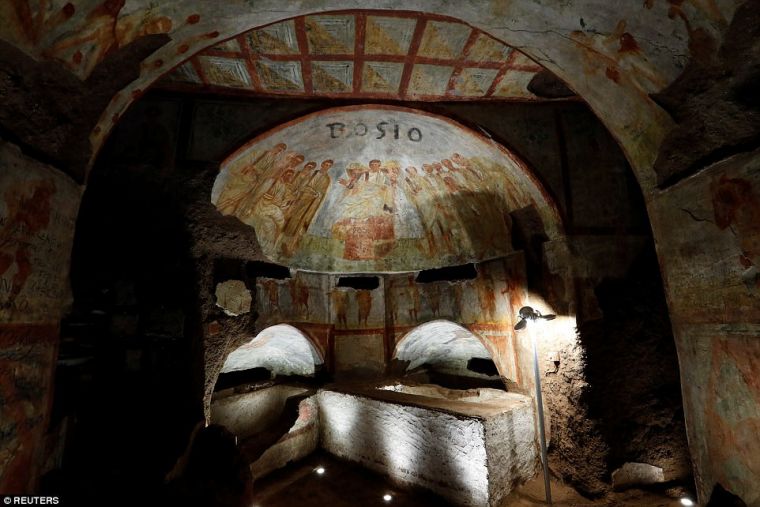Ancient Christian frescoes in the catacombs of Rome unveiled to the world for first time in centuries

Laser technology has been used to reveal Christian frescoes from centuries ago, hidden until now in the underground tunnels of the catacombs of Rome.
The images in the Domitilla Catacombs, the largest in Rome with 26,250 tombs running over 12 kilometres and four storeys deep, show the journey made by some of the cities first Christians from paganism to Rome.
One area has third century images that are largely pagan.
But in another area, frescoes from the fourth century and beyond with images of Christ, the early saints and disciples illustrate the conversion of Rome to Chritianity.
The catacombs are named after the wealthy and powerful family of the time that had them built.
Among the frescoes are images of Noah, the Ark and the feeding of the 5000. Many images of bread and grain show the importance of this food in Christian faith and also the centrality of the grain merchant trade to commerce in Rome at the time.,
The high-tech lasers removed algae, calcium and stains from the fumes from oil lamps to reveal the paintings.
Barbara Mazzei , head of the restoration, said that for the first time, the new laser technique meant that the colours could be restored as close as possible to how they had originally appeared, 1,600 years ago.
'These tombs represent the roots of our deepest identity, the roots of Rome and of Christianity,' Cardinal Gianfranco Ravasi, head of the Pontifical Commission of Sacred Archaeology, told Vatican Radio. The frescoes illustrate the 'profound link between the classical and Christian culture to culture'. They are an 'iconographic complex images of extraordinary intensity and beauty and especially of great daily reminder that here, under the ground, continued the life that took place above,' he added.











